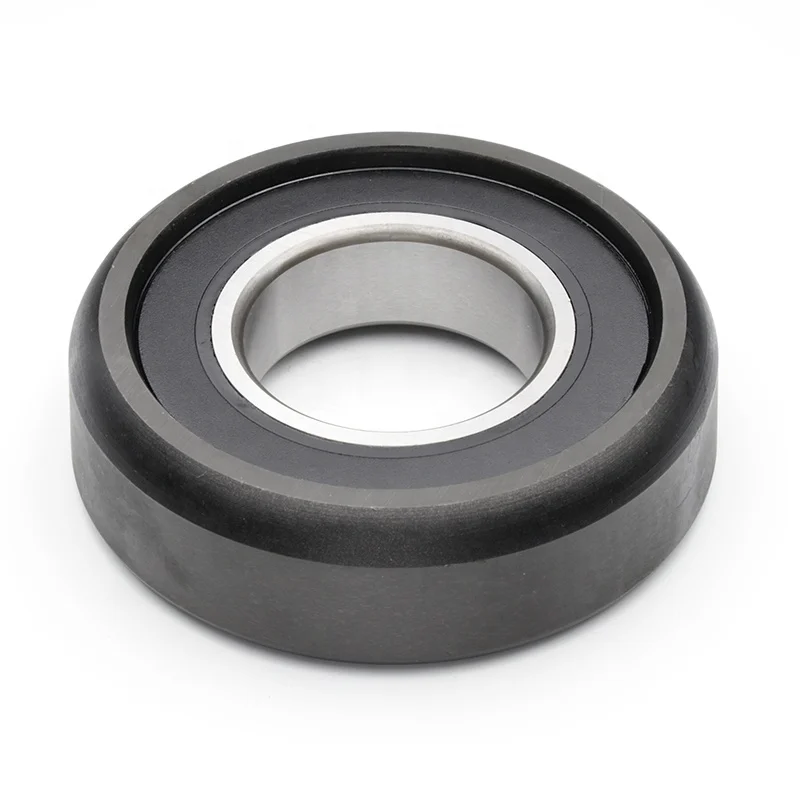Table of Contents
Categories
-
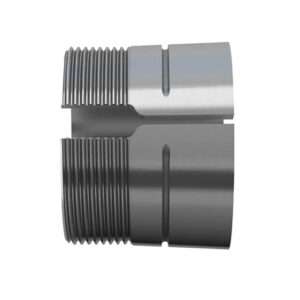
Adapter Sleeves (9)
-
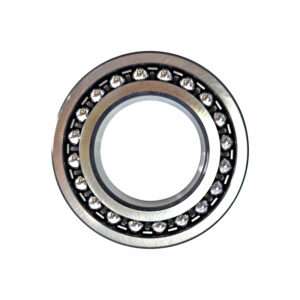
Ball Bearings (11)
-

Ball Screw Bearings (2)
-
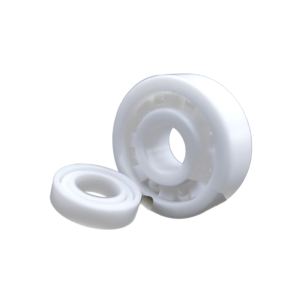
Ceramic Bearings (27)
-
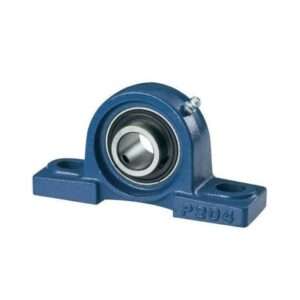
Pillow Block Bearings (4)
-
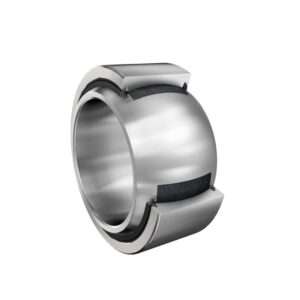
Plain Bearings (32)
-
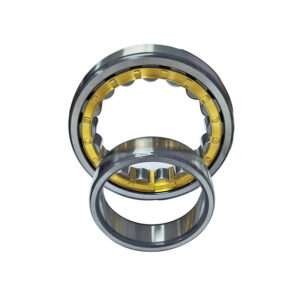
Roller Bearings (12)
-

Slewing Bearings (43)
-
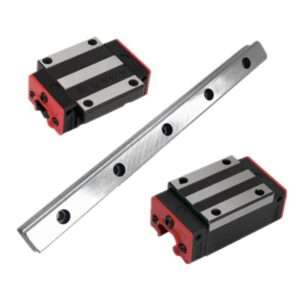
Sliding Block (3)
-

Stainless Steel Bearings (27)
-
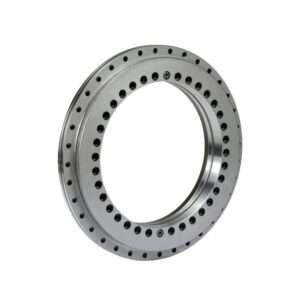
Super Precision Bearings (6)
-

Thin Section Bearings (9)
-

Track Rollers (4)
-

Universal Joints (1)
Chips
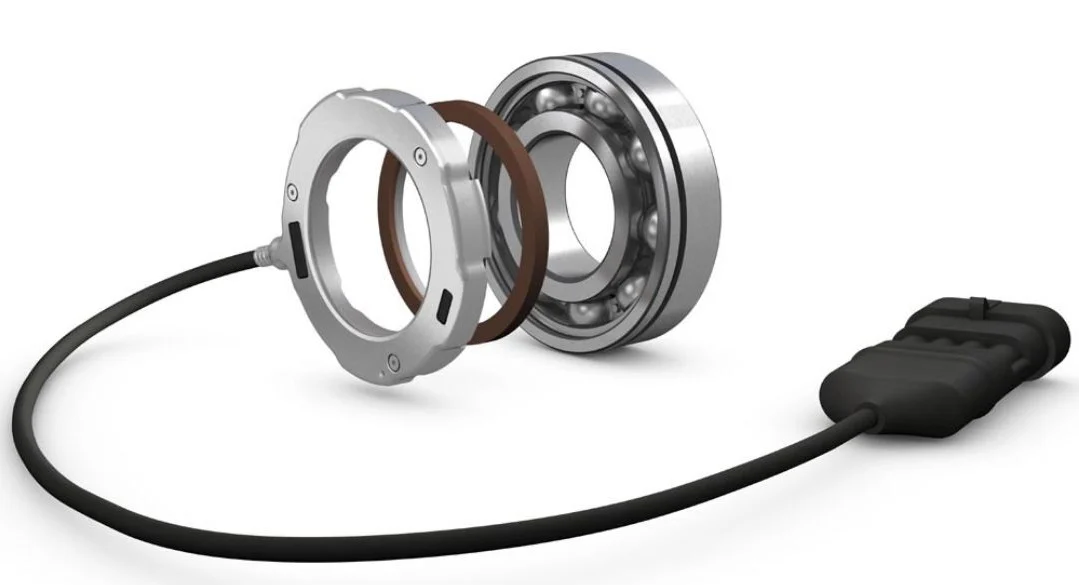
1. Introduction to Sensor Bearings
The Evolution of Bearing Technology in Industry 4.0
Bearing technology has come a long way from grease-packed housings and trial-and-error maintenance. As Industry 4.0 sweeps through shop floors worldwide, bearings have begun pulling double duty—not just turning shafts but also gathering critical performance data. These sensor-integrated components now form the nerve endings of modern machines, signaling when something’s out of whack long before the damage is done.
Why Smart Components Are Changing Factory Efficiency
Old-school bearings did their job and did it well—but they didn’t talk back. Today’s smart components communicate in real time, helping operators catch inefficiencies and faults before they snowball into expensive downtime. That kind of proactive insight? It’s like swapping a flashlight for a floodlight when inspecting performance across your line.
Key Benefits Procurement Teams Should Know
For procurement teams, sensor bearings offer more than just a tech upgrade—they deliver quantifiable returns. Lower maintenance bills, extended asset life, and fewer emergency repairs mean better budget forecasting. Plus, manufacturers that deploy sensor tech are stepping ahead of the curve in competitive markets.
2. What Are Sensor Bearings?
Defining Sensor-Embedded Bearing Systems
Sensor bearings are advanced mechanical units embedded with sensing elements capable of monitoring various parameters such as temperature, vibration, and speed. These aren’t just bearings with bells and whistles—they’re precision components built to give a constant pulse on performance. In short, they’re the fusion of mechanical reliability and digital intelligence.
How They Differ from Traditional Bearings
Unlike traditional bearings that operate blindly, sensor bearings feed data back to centralized systems or edge processors. This creates a closed feedback loop, enabling condition-based monitoring instead of calendar-based inspections. That shift alone can trim significant waste from the maintenance schedule.
Core Components Inside a Sensor Bearing
A typical sensor bearing packs in an encoder, signal processor, and power source, often housed within a compact, sealed design. Some units use Hall-effect sensors for magnetic detection, while others include MEMS accelerometers for vibration tracking. It’s like giving your machines a sixth sense without adding bulk.
3. How Sensor Bearings Work
The Role of Built-In Sensors in Real-Time Monitoring
Built-in sensors detect operational anomalies the moment they arise—think sudden spikes in heat, changes in rotation speed, or the onset of vibration. These readings are taken continuously, offering a real-time snapshot of your system’s health. That means engineers can spot trouble before it leads to catastrophe.
Data Collection and Transmission Mechanics
The sensor transmits collected data either through a wired connection or wirelessly via Bluetooth, Zigbee, or industrial Wi-Fi protocols. In high-speed systems, even microsecond delays matter—so this process is optimized for low latency. Most modern systems include secure, encrypted data handling to keep your line both safe and smart.
Integration with IoT and Industrial Automation
Sensor bearings plug right into broader IoT ecosystems, feeding data to SCADA platforms, MES systems, or cloud-based dashboards. This integration turns your production line into a network of talking machines. It’s like turning your factory into a living organism with a central nervous system.
4. Key Features of Modern Sensor Bearings
Vibration and Temperature Sensing Capabilities
Modern sensor bearings are finely tuned to detect even the faintest hint of abnormal vibration or heat. These early indicators can mean the difference between a minor adjustment and a full-blown shutdown. It’s preventative care for your production line.
Load and Speed Measurement Accuracy
With pinpoint precision, these bearings measure axial and radial loads, as well as rotational speed. This allows for optimal load distribution and shaft alignment over time. Getting those metrics right means less wear and more output.
Wireless vs. Wired Communication Options
Some setups call for hardwired connections, especially in environments where electromagnetic interference is a concern. Others benefit from wireless systems that are easier to retrofit and expand. The key is choosing what fits your floor layout and latency tolerance.
5. Why Efficiency Is Critical for Assembly Lines
The Cost of Unplanned Downtime in Manufacturing
Every minute your line sits idle costs money—and not just in lost production. There’s wasted labor, missed delivery schedules, and sometimes spoiled goods. Sensor bearings give you a fighting chance to prevent these costly hiccups.
How Sensor Bearings Optimize Production Flow
By identifying micro-stoppages or irregular loading, these components help smooth out workflow kinks. Think of it as adding cruise control to your conveyor belt. The line moves smarter, not just faster.
Case Study: Efficiency Gains in Automotive Lines
One tier-one auto supplier reported a 27% drop in unscheduled maintenance after integrating sensor bearings. That’s not pocket change—that’s thousands of vehicles staying on track, keeping both OEMs and end customers happy. The investment paid for itself in under a year.
6. Reducing Maintenance Costs with Sensor Bearings
Predictive Maintenance vs. Reactive Repairs
Traditional reactive maintenance waits for a breakdown before taking action. Predictive systems, powered by sensor bearings, forecast failures before they occur. It’s the difference between calling the fire department and installing a smoke detector.
How Sensor Data Lowers Labor and Part Replacement Costs
Maintenance teams no longer have to guess which component is acting up—they know. This reduces time spent on inspections and parts replaced unnecessarily. That kind of efficiency multiplies across multiple machines and shifts.
Real-World ROI Analysis for Procurement Teams
A major appliance manufacturer reported saving $400,000 annually across three lines thanks to predictive maintenance powered by sensor data. Fewer stoppages, fewer parts ordered, and fewer overtime hours. Now that’s a return you can take to the boardroom.
7. Improving Equipment Longevity
Detecting Early Wear Signs Before Failure
Micro-cracks, heat spots, or sudden jolts—sensor bearings catch these early symptoms of mechanical stress. Early detection allows intervention before catastrophic failure. It’s like getting a heads-up before the check engine light comes on.
How Continuous Monitoring Extends Bearing Life
Steady oversight means fewer overloads and heat cycles, both of which shorten bearing life. By running within ideal parameters, bearings can last longer and perform better. That’s uptime you can count on.
Impact on Warranty and Lifecycle Costs
OEMs often reward facilities that follow predictive maintenance with longer warranties or better service terms. Plus, the cost per operating hour drops as failure rates decline. It’s a win for the maintenance team and the bean counters alike.
8. Enhancing Quality Control
Detecting Alignment and Imbalance Issues
Subtle misalignments and rotor imbalances are often invisible to the naked eye. But sensor bearings pick them up instantly, preventing quality issues down the line. That means fewer defects and tighter tolerances.
Preventing Product Defects with Real-Time Adjustments
Some systems auto-correct based on sensor input—slowing down a spindle, adjusting a conveyor’s tilt, or halting production. These in-the-moment fixes can save entire batches from the scrap heap. The result? Fewer headaches and happier customers.
How Sensor Data Improves Manufacturing Consistency
When every unit counts, consistency is king. With historical data and real-time alerts, production parameters stay locked in. That kind of repeatability helps meet ISO standards and impresses auditors.
9. Compatibility with Existing Machinery
Retrofitting Sensor Bearings vs. Full System Upgrades
For most facilities, yanking out existing machinery just to chase digital transformation is a hard pill to swallow. That’s where retrofitting sensor bearings really shines—offering a cost-efficient, low-disruption upgrade path. Modern sensor bearings are cleverly engineered to fit standard envelope dimensions, meaning you can slip them into place without calling in a full army of engineers. Retrofitting enables plants to tap into data-rich diagnostics without shelling out for wholesale automation overhauls. This approach buys valuable time and stretches budgets while laying the groundwork for future smart upgrades. Full system replacements, on the other hand, can feel like trying to swat a mosquito with a backhoe—expensive, excessive, and often unnecessary.
Challenges in Legacy System Integration
Old machinery and new tech often mix like oil and water unless you’re strategic about it. Legacy systems weren’t built with data collection in mind, so interfacing sensor bearings with existing controllers, PLCs, or HMIs can trigger compatibility headaches. Signal interpretation, power supply differences, and outdated firmware are just a few of the potholes to avoid. In some cases, intermediate devices like edge processors or gateways may be required to translate data into usable formats. Operators may also need retraining to work with the new feedback loops introduced by sensor-enabled components. It’s not an impossible task, but it’s not quite plug-and-play either—more like plug-and-tweak.
Best Practices for a Smooth Transition
Start by auditing your current assets and mapping out where sensor bearings will add the most value—targeting high-failure areas or critical process nodes is a smart move. Use pilot installations to fine-tune integration procedures before rolling out plant-wide changes. Bring IT and OT teams together early in the game to ensure that data can flow securely and effectively from the shop floor to cloud dashboards. Standardizing sensor protocols like IO-Link or using modular sensor packages can reduce headaches during commissioning. Finally, don’t underestimate the power of good documentation—clear retrofit instructions and wiring diagrams save you from a lot of midnight troubleshooting.
10. Data Analytics and Sensor Bearings
Turning Raw Sensor Data into Actionable Insights
Sensor bearings collect a treasure trove of real-time data—think temperature, vibration, speed, and load metrics streaming nonstop. But raw data without context is just noise. The magic happens when that data gets visualized and trended to show wear patterns, overload events, or thermal anomalies before they become full-blown failures. With the right dashboard tools, maintenance teams can shift from firefighting breakdowns to proactive scheduling. Even better, operations managers can optimize line speeds and throughput based on real equipment behavior, not just spec sheet assumptions. That’s how sensor data becomes not just interesting, but indispensable.
AI and Machine Learning for Predictive Models
Throw in artificial intelligence and machine learning, and suddenly you’re not just reacting—you’re predicting. Algorithms can learn the normal “heartbeat” of a bearing’s operation and flag deviations before they spiral into chaos. Over time, the system gets smarter, adapting to seasonality, shift changes, or raw material variations. Predictive models can even simulate failure modes based on historical trends, giving planners an early-warning radar for costly downtimes. It’s like having a sixth sense in your maintenance toolbox, and the longer the data stream, the sharper that sense becomes. For plants chasing OEE gains, this kind of foresight is pure gold.
How Procurement Teams Can Leverage Data for Negotiations
Procurement isn’t just about pushing paper anymore—it’s a data-driven game now. Armed with usage statistics and lifecycle trends pulled directly from sensor bearings, buyers can negotiate better warranty terms, bulk discounts, or service contracts. For example, if analytics show that a certain bearing type consistently exceeds its rated life, that’s leverage in a volume deal. Conversely, chronic underperformance across multiple sites might justify a switch in vendor. Procurement teams that tap into the operational data stream become not just cost controllers, but strategic value drivers. It’s the kind of edge that turns bean counters into boardroom influencers.
11. Top Applications in Smart Factories
Robotics and Automated Guided Vehicles (AGVs)
In the world of robotics and AGVs, every millisecond and micron counts. Sensor bearings are mission-critical here, feeding position and load data back to control systems to fine-tune motion and ensure repeatability. AGVs depend on precision movement through tight spaces, and any deviation in torque or alignment can cause big headaches in synchronized workflows. Real-time feedback helps preempt mechanical drift and improves path accuracy over time. In high-speed pick-and-place operations, this level of precision is the difference between humming efficiency and a logjam. And with space at a premium, the compactness of sensor bearings fits right in without bloating the system footprint.
CNC Machines and High-Speed Spindles
In CNC machining, especially in aerospace or automotive sectors, uptime and precision are non-negotiable. High-speed spindles generate tremendous stress, and without real-time condition monitoring, you’re flying blind. Sensor bearings here monitor thermal expansion, rotational velocity, and imbalance, allowing tight control over machining tolerances. When paired with closed-loop control systems, they can dynamically adjust feed rates or tool paths to account for wear or load changes. That results in fewer tool breakages and more consistent part quality. You’re not just avoiding failure—you’re tuning the process like a race car mechanic on qualifying day.
Conveyor Systems in Food and Pharma
For food and pharma lines, cleanliness and compliance walk hand-in-hand with uptime. Conveyor systems in these industries face harsh washdowns, tight regulations, and relentless runtime expectations. Sensor bearings provide constant feedback without introducing contamination risk, thanks to their sealed designs and corrosion-resistant materials. They can alert operators to impending issues like misalignment, chain slack, or excessive temperature before product integrity is compromised. This early warning system keeps the FDA and QA departments happy while reducing unplanned halts. It’s peace of mind baked into every revolution.
12. Comparing Leading Sensor Bearing Brands
SKF, NSK, and Timken: Key Differences
SKF, NSK, and Timken have all thrown their hats into the smart bearing ring, but each brings a different flavor to the table. SKF leans heavily into modular designs with wide protocol compatibility and cloud-based analytics baked right in. NSK often shines in compactness and high-speed applications, with clever integrations for linear guides and robotics. Timken plays the durability card, focusing on harsh-environment performance and condition monitoring for heavy-duty equipment. While all three offer robust products, their sweet spots differ—understanding those nuances helps avoid overengineering or underdelivering.
Price vs. Performance Considerations
Not all sensor bearings are created equal, and the priciest option isn’t always the best fit. Some units offer ultra-high sensitivity and data granularity that may be overkill for standard line conveyors. Meanwhile, budget models might lack real-time feedback or standardized protocols, creating headaches during integration. The trick is to match the performance envelope of the bearing to the criticality of the application. Spending wisely here means focusing on value—not just the sticker price, but the uptime, accuracy, and maintenance savings down the line.
How to Evaluate Supplier Reliability
Beyond the glossy spec sheets, a supplier’s reliability is worth its weight in uptime. Look for track records in your specific industry, not just broad capabilities. Ask for MTBF (Mean Time Between Failures) data, customer references, and after-sales support structures. Evaluate how quickly they can ship replacements, how thorough their documentation is, and whether they provide training or onboarding help. Remember, a sensor bearing without service is just a ticking time bomb—go with a partner, not just a provider.
13. Cost-Benefit Analysis for Procurement
Upfront Investment vs. Long-Term Savings
Sensor bearings aren’t cheap—no bones about it—but that’s only half the story. Their real value comes from what they prevent: catastrophic failures, downtime, and excessive maintenance labor. By catching issues early, they extend equipment life and reduce emergency repair costs, often paying for themselves within a fiscal quarter. Factor in savings from energy optimization and improved yield, and suddenly the ROI isn’t just compelling—it’s glaringly obvious. Think of it like paying for a home security system—you hope you never need it, but when trouble hits, it more than earns its keep.
How to Build a Business Case for Adoption
A solid business case starts with hard numbers—compile historical downtime incidents, repair costs, and productivity losses that sensor bearings could’ve mitigated. Model the projected improvements using pilot results or supplier case studies, then plug those into a five-year TCO (Total Cost of Ownership) analysis. Include soft benefits like safety improvements and reduced scrap rates to paint the full picture. Back your proposal with data dashboards or testimonials from engineering teams. The stronger your narrative and metrics, the faster you’ll clear budget hurdles.
Negotiating Bulk Purchase Discounts
Once the decision is greenlit, it’s time to flex that volume muscle. Manufacturers are often open to price breaks when you commit to standardized bearing SKUs across multiple facilities. Bundling hardware with software licenses or service packages can further sweeten the pot. Locking in annual contracts also helps stabilize costs against market volatility. And don’t overlook support perks—extended warranties, training programs, or installation help are all chips worth bargaining with. In procurement, the squeaky wheel gets the grease—and the discount.
14. Global Supply Chain Considerations
Sourcing Sensor Bearings from Trusted Manufacturers
In today’s global marketplace, getting your hands on high-quality sensor bearings is as much about who you know as what you buy. Working with established, ISO-certified manufacturers helps ensure product consistency and performance under pressure. Trusted suppliers like those with vertically integrated operations can offer better traceability, tighter tolerances, and dependable support when things go sideways. Avoiding fly-by-night vendors—especially in the race to cut costs—prevents quality-control nightmares and warranty disputes down the road. It’s worth checking if a supplier has regional warehousing or tech centers to support quick fulfillment and field assistance. In short, reliability beats rock-bottom pricing when uptime’s on the line.
Lead Times and Inventory Management Strategies
With ongoing volatility in global logistics, lead times have become more unpredictable than a cat on a hot tin roof. To keep production from grinding to a halt, smart buyers are embracing hybrid inventory strategies—mixing just-in-time ordering with strategic stockpiling of critical spares. Vendor-managed inventory (VMI) programs can also be a lifesaver, shifting responsibility to the supplier while improving visibility across the supply chain. Consider dual-sourcing high-use SKUs or qualifying equivalent components to build resilience into your system. Lead time transparency from vendors—backed by real-time ERP integration—can help planners make proactive decisions rather than reactive ones. When delays cost tens of thousands per hour, every day counts.
Mitigating Risks in Component Shortages
Sensor bearings, like many precision components, rely on specialized raw materials and electronics—both of which are vulnerable to shortages. Political instability, rare-earth bottlenecks, and chip allocation wars can throw a wrench in your plans quicker than you can say “line stoppage.” To hedge against these risks, develop relationships with multiple vendors and request periodic demand forecasts to lock in supply ahead of time. Some procurement teams are even signing forward contracts or stocking long-lead items in decentralized hubs. If your supplier offers redesign flexibility or backward compatibility features, you can adapt to substitute parts faster without a full revalidation. Risk mitigation is no longer a luxury—it’s the new baseline.
15. Future Trends in Sensor Bearing Technology
Advances in Miniaturization and Energy Efficiency
As factories pack more intelligence into tighter spaces, sensor bearings are following suit with smaller footprints and lower power draw. Today’s cutting-edge models integrate micro-electromechanical systems (MEMS) that sip power while delivering high-resolution data. Some even harvest ambient energy—like vibration or temperature differentials—to extend battery life or eliminate it altogether. This evolution is a godsend for compact robotic arms, surgical devices, and lightweight AGVs. Miniaturization also opens doors for embedding sensors in places once deemed too cramped or too thermally hostile. With power savings and performance gains going hand-in-hand, tomorrow’s sensor bearings will work smarter—not harder.
The Role of 5G in Faster Data Transmission
The rollout of 5G connectivity isn’t just a boon for your smartphone—it’s set to revolutionize industrial IoT networks. For sensor bearings, this means ultra-low latency, higher bandwidth, and the ability to transmit large volumes of condition monitoring data in real-time. With 5G gateways, facilities can process edge data locally or shoot it straight to the cloud for advanced analysis without delay. This opens the door for real-time adaptive machining, predictive shutdowns, and even digital twin simulations based on live bearing performance. When milliseconds matter, 5G will be the nerve fiber of the smart factory.
What Procurement Teams Should Watch For
Procurement professionals should keep their eyes peeled for sensor bearings that support open communication protocols like OPC UA, MQTT, or IO-Link Wireless. These standards improve interoperability and make system-wide integration a whole lot less painful. Another watchpoint is firmware update capabilities—future-proofed bearings should allow OTA (over-the-air) updates to extend functionality without a wrench in sight. Eco-certifications and compliance with global standards (like RoHS or REACH) are also becoming non-negotiables, especially in regulated sectors. Lastly, keep tabs on sustainability claims—more manufacturers are rolling out recyclable materials and circular economy initiatives. Tomorrow’s best deals won’t just be about cost—they’ll balance capability, compliance, and carbon footprint.
16. Conclusion: Making the Case for Sensor Bearings
Recap of Key Efficiency and Cost Benefits
Sensor bearings punch well above their weight when it comes to performance payback. They reduce unplanned downtime, extend equipment life, and slash maintenance budgets by replacing guesswork with real-time data. From improving cycle times to catching catastrophic failures before they happen, they add a layer of intelligence that transforms how factories operate. Add to that reduced energy usage, fewer product defects, and less manual intervention, and you’ve got a clear winner. These aren’t just bearings—they’re the heartbeat of the modern assembly line.
Final Recommendations for Implementation
Start small with a targeted pilot—maybe a high-failure machine or a critical spindle—and document every gain you make. Standardize sensor-bearing models across sites where possible to streamline inventory and training. Invest in middleware and visualization tools early to make sense of the incoming data tsunami. Don’t forget about change management—train operators and maintenance crews so they don’t just ignore those shiny new readouts. And finally, work with vendors who offer end-to-end support, not just boxes of hardware.
Next Steps for Procurement Decision-Makers
Procurement teams should gather historical failure data, calculate potential savings, and present a multi-year ROI model to secure executive backing. Once approved, negotiate long-term supply agreements to lock in pricing and guarantee availability. Push for digital twin trials or proof-of-concept kits from top-tier vendors. And above all, position sensor bearings not as a one-off upgrade—but as a foundational investment in the smart factory era. When the rubber meets the road, these smart little marvels might just be the biggest hidden asset in the plant.
Related Posts


Delrin Bearings: Lubrication-Free Long Life
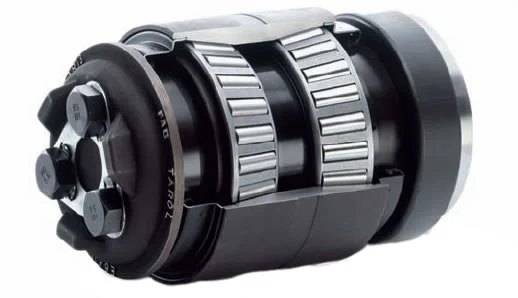
Locomotive Bearing Specs That Matter Most
